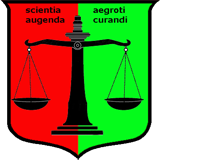Professor Dr. med. Christian ScharfetterDept. of Psychiatry, Psychotherapy & PsychosomaticsPsychiatric Hospital, University of Zurich |

|


|
Medical Comorbidity in Mental IllnessMedical comorbidity in mental illnesses underlines the role of nonspecific vulnerability and resilience factors in the pathogenesis of major depression, bipolar illness, schizoaffective disorders, and schizophrenia as over half of patients in psychiatric treatment typically receive more than one clinical diagnosis. Besides preventable risk factors, such as alcoholism, nicotine dependence, substance abuse, and lack of exercise, particularly high among patients suffering from psychiatric disorders are the rates of obesity, diabetes, hypertension, arthritis, and asthma. However, the "true" prevalence rates are unknown because the observed rates are confounded by the fact that overweight and obesity are increasingly common public health issues of the general population. Implications for Outcome and Health Service UtilizationThe medical comorbidity has serious implications not only for functional outcome, medication adherence, and health service utilization, but also for mortality. In fact, schizophrenia has been described as a "life-shortening disease" since medical comorbidity accounts for up to 60% of premature deaths not related to suicide. Recognition and management of medical morbidity in psychiatric patients is made especially difficult by the lack of cooperation and the lack of insight among the patients, the attitudes of medical practitioners, as well as the structure of healthcare delivery services that insufficiently cover the needs of chronically ill psychiatric patients. Assessing Ethnicity-Related and Ethnicity-Independent Risk FactorsUsing the genome-wide screening data of the Framingham Heart Study (394 nuclear families, 1,328 genotyped subjects, 397 marker loci) we quantified the inherent population stratification through high-dimensional molecular-genetic feature vectors and constructed a genetic vector space for the analysis of population substructure. Adaptive clustering procedures led to 3 major subgroups that were regarded as being related to "biological ethnicity" and included more than 70% of the subjects. Based on these subgroups we addressed the question of ethnicity-related and ethnicity-independent risk factors for Coronary Heart Disease (CHD). Hypertension as Endophenotype of Coronary Heart Disease (CHD)In a second step, we used hypertension as an endophenotype of CHD and applied a multivariate sib-pair method in order to search for oligogenic marker configurations for which the sib-sib similarities deviated from the parent-offspring similarities with the latter similarities being always "0.5" irrespective of the affection status of parents and offspring. Loci with significant contributions to the oligogenic marker configuration constituted a CHD-specific genetic vector space. The empirical structures of this CHD vector space, as revealed by similarity-based adaptive cluster analyses, were then correlated with the quantitative longitudinal phenotype. References
Stassen HH, Begleiter H, Porjesz B, Rice J, Scharfetter C, Reich T: Structural decomposition of
genetic diversity in families with alcohol dependence. Genetic Analysis Workshop 11: Analysis
of genetic and environmental factors in common diseases. Genetic Epidemiology 1999; 17:
325-330
Stassen HH and Scharfetter C: Integration of genetic maps by polynomial transformations.
Am J Med Genetics B 2000; 96: 108-113
Stassen HH, Bridler R, Hägele S, Hergersberg M, Mehmann B, Schinzel A, Weisbrod M, Scharfetter C:
Schizophrenia and smoking: evidence for a common neurobiological basis?
Am J Med Genetics B 2000; 96: 173-177
Hoffmann K, Stassen HH, Reis A: Genkartierung in Isolatpopulationen. Medizinische Genetik 2000;
12,4: 428-437
Stassen HH, Scharfetter C: Oligogenic approaches to the predisposition of asthma in ethnically
diverse populations. Genetic Analysis Workshop 12: Analysis of genetic and environmental factors
in common diseases. Genetic Epidemiology 2001; 21(1): 284-289
Stassen HH, Hoffmann K, Scharfetter C: Similarity by state/descent and genetic vector spaces:
Analysis of a longitudinal family study. Genetic Analysis Workshop 13: Analysis of longitudinal
family data for complex diseases and related risk factors. BMC Genet 2003; 4, S59: 1-6
Stassen HH, Bridler R, Hell D, Weisbrod M, Scharfetter C: Ethnicity-independent genetic basis
of functional psychoses. A Genotype-to-phenotype approach. Am J Med Genetics B 2004; 124:
101-112
Berger M, Stassen HH, Köhler K, Krane V, Mönks D, Wanner C, Hoffmann K, Hoffmann MM, Zimmer M,
Bickeböller H, Lindner TH: Hidden population substructures in an apparently homogeneous
population bias association studies. Eur J Hum Genetics 2006; 14: 236-244
Stassen HH, Szegedi A, Scharfetter C: Modeling Activation of Inflammatory Response System.
A Molecular-Genetic Neural Network Analysis. BMC Proceedings 2007, 1 (Suppl 1): S61, 1-6
Stassen HH, Hoffmann K, Scharfetter C: The Difficulties of Reproducing Conventionally Derived
Results through 500k-Chip Technology. BMC Genet Proc. 2009; 3 Suppl 7: S66
|
|

Structural decomposition of genetic diversity: projection of the feature vectors of 1,328 subjects onto the plane defined by the 3 cluster centers associated with the 3 largest clusters. The underlying feature vectors included those 20 markers that displayed the largest allelic variability in the Framingham population. |
|
| [ Mail to Webmaster ] k454910@ifrg.ch |